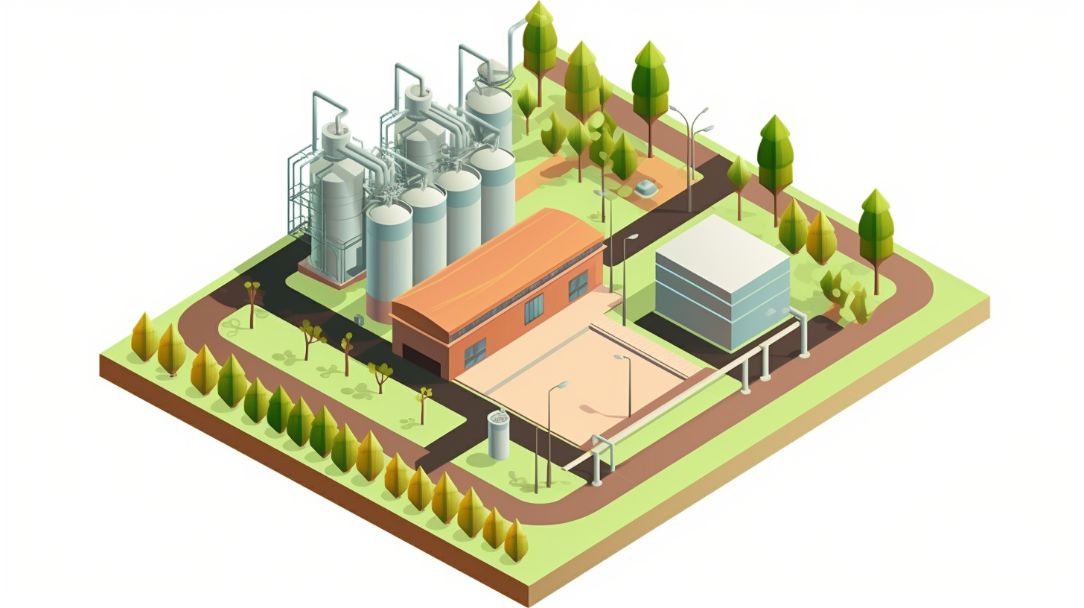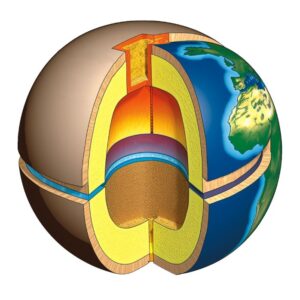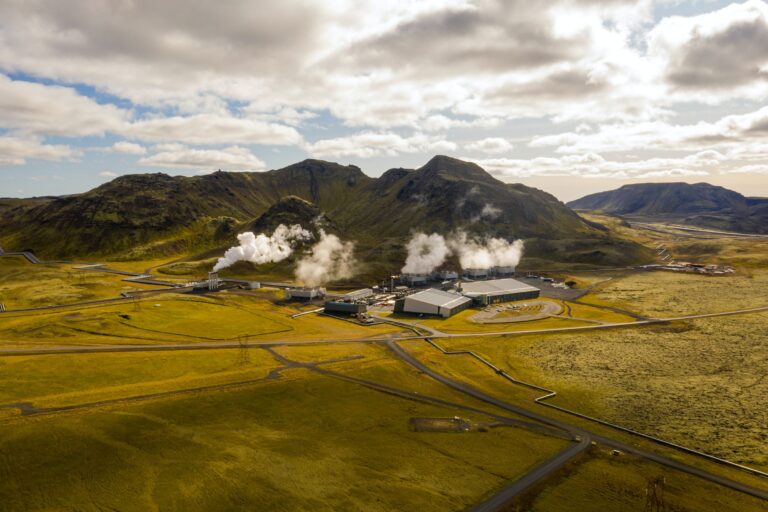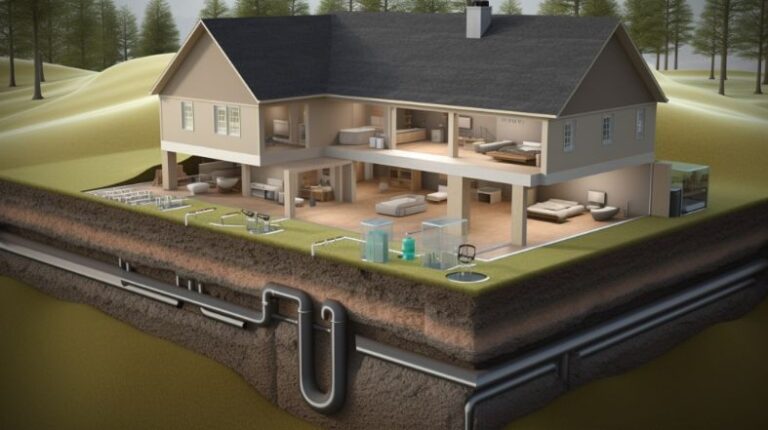The Environmental Benefits of Geothermal Energy
Geothermal energy is a sustainable energy source that derives its heat from the earth’s center. This energy is captured by using geothermal power facilities, which turn heat into electricity. As we try to decrease our reliance on fossil fuels and combat climate change, renewable energy sources such as geothermal energy are becoming increasingly essential. In this piece, we will look at the advantages of geothermal energy and its ability to provide a long-term source of electricity. We will also look at the obstacles that must be surmounted in order for this technology to reach its maximum potential.
Table of Contents
What is Geothermal Energy?
Geothermal energy is a sustainable energy source that derives its heat from the earth’s center. This energy is captured by geothermal power facilities, which transform heat from the earth’s core into electricity.
How it works
Geothermal power plants generate electricity by digging deep into the earth’s crust to extract hot water and steam created by the earth’s core.
The heated water and vapor are then used to operate turbines, which produce energy.
The method is extremely efficient and emits no greenhouse gases, making it a pure and renewable energy source.
Types of geothermal power plants
Geothermal power facilities are classified into two types: dry steam and flash steam. Dry steam power plants generate steam straight from the earth’s core, whereas flash steam power plants generate steam from hot water drawn up from the earth’s core. Both kinds of power plants generate a lot of electricity and are used all over the globe to provide pure, renewable energy.
Environmental Benefits of Geothermal Energy
Geothermal energy is a sustainable energy source with many environmental advantages. Here are some of the main advantages:

- Lowering greenhouse gas emissions: Geothermal energy is a pure energy source that emits very few greenhouse gases. Geothermal energy is a viable and ecologically favorable option to fossil fuels, which emit large quantities of carbon dioxide and other toxins into the atmosphere.
- Minimal land use: When compared to other kinds of power plants, geothermal power plants require very little territory. This is because geothermal energy is created beneath, and the power facility only needs to access the produced steam or hot water. This means that geothermal energy can be generated in places where other kinds of power facilities would be impractical.
- Low water consumption: When compared to other kinds of power plants, geothermal power plants use very little water. This is due to the fact that the water used is recycled and repurposed rather than eaten and then released as wastewater. As a result, geothermal energy is a viable and ecologically friendly choice.
- No atmospheric pollution: Geothermal power facilities do not emit any pollutants into the atmosphere. This means they don’t add to smog, acid rain, or other forms of atmospheric pollution that are harmful to human health and the ecosystem.
- No noise pollution: When compared to other kinds of power plants, geothermal power plants are extremely silent. This is because they do not have any moving components that generate noise, such as turbines or motors. As a result, geothermal energy is a viable choice in areas where noise pollution is a problem.
Overall, geothermal energy is a more ecologically favorable and viable option to fossil fuels. It has numerous environmental advantages, including lower greenhouse gas emissions, less ground use, less water use, no air pollution, and no noise pollution. As the world seeks cleaner and more sustainable energy sources, geothermal energy is likely to play an increasingly essential part.
Geothermal Energy vs. Fossil Fuels
Geothermal energy and fossil fuels are two commonly used energy sources around the globe. While fossil fuels have long been the main source of energy, geothermal energy is increasing popularity due to environmental advantages. We will examine the environmental effects, costs, and abundance of geothermal energy and fossil fuels in this essay.
Comparison of Environmental Impacts
The environmental effect of fossil fuels is well documented. The extraction, transportation, and combustion of fossil fuels emit hazardous pollutants into the atmosphere, water, and soil. Climate change, air pollution, and river pollution are all exacerbated by these contaminants. Geothermal energy, on the other hand, is a pure and renewable form of energy. It emits no toxic emissions or pollutants, making it an ecologically responsible choice.

Comparison of Costs
The expense of energy generation is an important consideration when deciding which energy source to use. Although fossil fuels are comparatively inexpensive to create, the costs of extraction and shipping can be prohibitively expensive. Furthermore, the price of natural fuels fluctuates on the worldwide market. Geothermal energy, on the other hand, has a greater initial investment due to drilling and implementation costs. However, once the system is installed, the expense of producing electricity is comparatively cheap. Because geothermal energy is not affected by market changes, it is a more steady and predictable energy source.
Comparison of Availability
Fossil fuels are a finite resource with restricted supply. As the demand for energy grows, the quantity of fossil fuels will ultimately deplete. Geothermal energy, on the other hand, is an inexhaustible resource that is accessible 24 hours a day, seven days a week. The heat from the earth’s core is a continuous supply of energy that can be used to generate power and heat.
To summarize, geothermal energy is a more environmentally friendly, durable, and reliable source of energy than fossil fuels. While geothermal energy has a greater initial expense, the long-term benefits outweigh the original expenditure. Geothermal energy is a viable choice that should be explored as we continue to look for methods to reduce our environmental effect.
Challenges and Limitations of Geothermal Energy
Geothermal energy is a renewable energy source that generates power by harnessing heat from the Earth’s interior. This technology, however, comes with a number of obstacles and constraints.

One of the most difficult aspects of geothermal energy is that it is site-specific. This means that it can only be used in places with adequate heat and water supplies. As a consequence, the possibility for geothermal energy is restricted to specific areas of the globe.
Another limitation of geothermal energy is the expensive initial investment required to construct and sustain geothermal power plants. These prices can be prohibitive for many nations and businesses, making investment in this technology difficult.
Furthermore, geothermal electricity is in short supply. While the Earth’s center is a huge source of heat, only a tiny portion of it can be used to generate energy.
Finally, geothermal energy has the ability to cause induced seismicity. This happens when water is injected into the Earth’s crust to produce steam for energy generation, which can cause tremors.

Conclusion
To summarize, transitioning to renewable energy sources is critical for the wellbeing of our world. We’ve talked about the numerous environmental
advantages of renewable energy, such as lower greenhouse gas pollution, better air and water purity, and less dependence on fossil fuels.
We must continue to promote the advancement of renewable energy methods, especially geothermal energy. Geothermal energy has the ability to meet a large part of our energy requirements while also lowering our carbon footprint.
We must all do our part to help the shift to sustainable energy sources. Advocating for government policies that support renewable energy, investing in renewable energy businesses, and making personal decisions to reduce our own energy consumption are all examples of this.
We can build a more sustainable future for ourselves and future families by working together to promote renewable energy growth.








One Comment